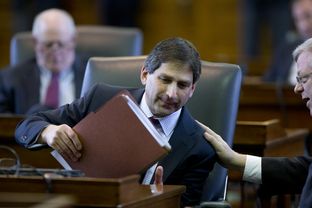Changing the Complexion of the Senate

The big headline from this week was Senate Republicans banishing the two-thirds rule. In its place, the GOP caucus (with the help of a single Democrat) lowered the voting requirement to 19 for bringing legislation to the floor — a threshold that Republicans will be able to meet without a single Democratic vote.
The two-thirds rule protected different types of minorities in the Senate. It protected the rural lawmakers in an urbanizing state as much as it protected members of the minority party.
Dismantling the rule was a change advocated by Lt. Gov. Dan Patrick since his arrival in the Senate in 2007.
Add in the recent turnover in the Senate GOP caucus, in which “moderates” like Robert Duncan, John Carona and Bob Deuell were replaced by Tea Party stalwarts like Charles Perry, Don Huffines and Bob Hall, and the action this week had the feel of a fait accompli.
One question going forward is, what will the Republicans use the new rule for?
For all the talk about the two-thirds rule, it has generally served to delay and not permanently block the GOP’s biggest legislative priorities.
That’s because key votes sometimes took place in special sessions, when the two-thirds rule isn’t in effect, such as the recent passage of new regulations on abortion facilities. Or votes have occurred after specific exceptions to the two-thirds rule were written into the Senate rules, as was the case with the voter ID law.
In other words, finding ways around the two-thirds rule was saved for the most pointedly partisan initiatives where the need to pass legislation has coincided with the need to compromise as little as possible on the issue.
If not needing a Democratic vote is now part of the regular legislative procedure, it could mean more pointedly partisan votes become part of the Senate’s new operating procedure.
It could also mean the majority party has less incentive to work on legislation to bring over Democratic votes on other high stakes but not necessarily partisan initiatives.
Will this session see more caucus line votes, in other words? And will the Senate strive as hard this session to achieve consensus on things like the budget? Or tax cuts? Or school choice?
As these questions are slowly answered in the coming months, it will become easier to know if changing the two-thirds rule represents an acceptable move toward “better governing,” as state Sen. Kevin Eltife argued on the floor this week, or if the character of the Senate as a deliberative body has been changed.

